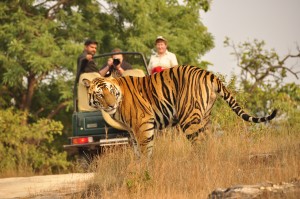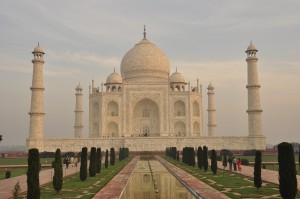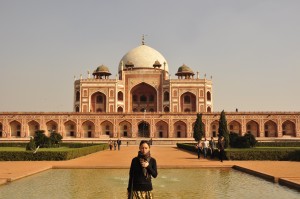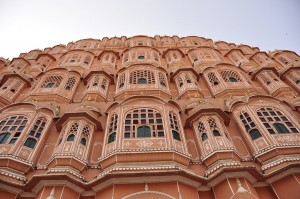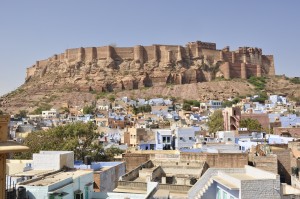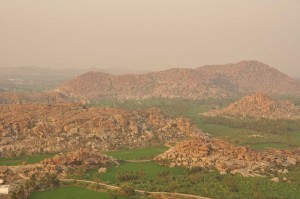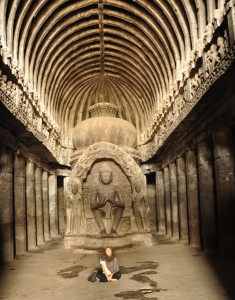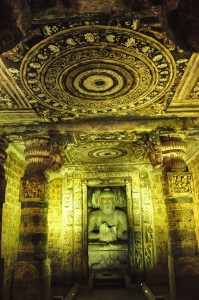The Mayans are one of those great mystic ancient civilizations, like the Egyptians and the Khmers of Angkor Wat, they suffered a demise so sudden and mysterious that their culture remains an enigma. In the process they left behind a marvelous array of cryptic archaeological legacies across Central America – ruined cities, brutal sacrificial legends, alphabets, calendars and exotic predictions for the future. Half forgotten and shrouded in jungle, today they continue to confound, fire and inspire the imaginations of all manner of historians, travellers and conspiracy theorists.
The single biggest mystery with the Mayans of course was their sudden disappearance. At the very peak of their arts, architecture and civilization known as the classic period, their greatest cities such as Tikal, Palenque & Copan were suddenly abandoned around 900 AD and the entire civilization structure collapsed. While the entire area remains populated by their descendants to this day and mass migrations North fuelled development of later cities, largely they are but pale imitations of their former cultural heights – a deserting diaspora bereft of much of their knowledge and skill. By the time the Spanish rocked up in the 15th century to Yucatan in Mexico, many of the cities themselves had fused culturally with the Toltecs and Aztecs, the dominant Mexican tribes from the North. The cycles of repeated bad luck and tragedy manifested brutally as massive rituals of human sacrifice.
In what is a major echo of our own time perhaps, historians can now attribute the collapse of these great cities to a perfect storm of 3 factors. 1) Massive overpopulation as the cities reached their zenith 2) Complete environmental collapse from over-farming around the area of the cities themselves and 3) a long, extended drought that in effect lasted the better part of a century. In many ways the secrets and lessons of the Mayans lie not with their more famed futuristic astrological predictions, but with the manner in which they disappeared. You don’t have to think too far ahead to see that overpopulation, environmental collapse and severe water shortages are all that await us in the next 50 years.
Apart from human sacrifice and the disappearing act though, the Mayans are probably best known for their advanced writing, mathematics, incredibly accurate astronomy and time measurement. In an historic context, their calendars, perfected at the height of their classic civilization (250-900 AD), were the most accurate on earth right up until the late Renaissance period in Europe in the 17th century, almost a thousand years later. Famously, the Mayans broke the world’s time into 5126-year periods, the final epoche calendar cycle, or b’ak’tun calculated by the Mayans, ends in December 2012. Many of today’s apocalyptic dooms-dayers credit the end of the world with this key date and given the state of society today its’ easy to play along, but there are other interpretations more reassuring. These read the importance of 2012 as not an end date in itself, but heralding the start of a new epoch of spiritual transformation and renewal – a new and final B’ak’tun that completes the cycle, one the Mayans never really had a chance to envision properly. We can certainly wish! Honestly speaking though, any civilization that didn’t see their own demise is hard to take too seriously in the prophecy stakes.
Back to us though, our Mayan adventures started in Southern Mexico with the people themselves. Then wound through the ruins of the great classic cities in Mexico to the most recent ones of the Northern Yucatan, diving into the great jungle cities and Mayan peoples of Guatemala, before finally finishing South in Honduras. A journey that yielded no magic answers on the question of 2012 and the fate of the world, but did provide for some fantastic locations, experiences and contemplations which I have summarized by location below:
The Modern Mayan Tribes
San Cristobel is a small, colonial town in the state of Chiapas. The cobblestone streets are a warren of lovely shops, café’s, restaurants, hostels and markets. It is a perfect blend of bohemian, colonial lifestyle in the heart of Mayan country and has trapped many a traveller. Not much of a danger for us in the height of winter though – the place is too bloody cold to sit still for long, but it is the villages that surround San Cristabel that enthral.
On a day tour from San Cristobel we visited 2 of them – San Juan Chamula and San Lorenzo Zinacantan, both home to the still fiercely independent Mayan tribes the Tzotzil and Tzeltal. Now to be honest, I didn’t really know that the Mayan people still existed at all. I had naively assumed that they had all died out long ago and were now the stuff of legend, but they still occupy extensive parts of Mexico and Belize and actually make up the majority of the population in Guatemala. Many of the more remote tribes such as those around San Cristobel still hold tightly to many aspects of their culture such as the traditional Mayan calendars and methods of counting and have done so continuously in the face of hundreds of years of ‘civilizing’ forces. Being able to witness this firsthand was an experience that resonated particularly strongly with me. Too often in our travels, we have encountered cultures quickly being over-run and trashed by globalization and that even greater cultural destroyer – Christian missionaries. It’s nice to see some still able to fight.
In San Lorenzo, the towns’ spiritual elders stand out the front of the local church with telltale grey and red hats demonstrating their various ranks, the elders wearing a unique kind of sandal. They stand there taking turns to chant, dance and administer the towns’ finances, a process that covers the better part of a 24 hour period every Sunday. The local women in the town all congregate in the square, opposite the church to sell their fruit and vegetables and brightly coloured woollen fabrics at the market. They all wear the same blue/purple woollen shawls with pink floral designs beautifully embroidered. Each Mayan village or tribe wears a different, distinctive colour combination like this to demonstrate where they are from – the same applies in much of Guatemala. There is no individuality here – their identity is all about the community, tribe or group and everything is managed collectively, hence the elders gathered at the church. The town also prohibits outside police, buses or taxi operators so everything is controlled and administered by the community itself – by the people for the people, necessary to protect themselves culturally from outside forces. It could not make a starker contrast with our own western imperative to set ourselves apart.
The next town, San Juan was even more striking. Here the locals wore a kind of black haired skirt and jacket, with a white variation to differentiate the spiritual leaders. We spent some time in a spiritual leaders’ house and learnt how they give up a year of their life for the honour of the role, paying for all the ceremonial dues, incense and other daily requirements out of their own personal savings. They spend several years of savings in fulfilling this role, but in doing so ensure their place of honour within the society.
The community concept here also ensures that there is almost no crime. If there is, criminals are publicly shamed and humiliated – we walked passed the cages where this occurs, but they are all empty. Seemingly minor transgressions from the community are dealt with harshly here. If you marry without family blessings, you are expelled from the town and community; with an even more severe excommunication for anyone that converts to Christianity. Changing religion or taking on obligations that prioritize things over the tribe, means you can no longer function in the community and are forced to leave. It is a harsh rule, but a necessary one to survive the constant cultural purges that the missionaries in particular bring. It is a lesson and solution that has been refined constantly over many centuries. San Cristobel itself is home to many generations of former village members thus removed, we are informed appreciatively by our guide, he is himself one.
Perhaps the most striking experience of the community here though was a visit to the local church. This was a former catholic church reprised by the Mayan community after expelling the priests from the town over some major ideological conflict. Now, with no meddling priests in place, it is open 24 hours a day and the villagers are able to visit with their own respective shaman, midwife or spiritual healer in order to conduct their own special rituals as needed. The floor of the church itself is covered in pine needles and statues of catholic saints line the walls in old glass boxes. Throughout the church villagers sit on the floor, burning candles in front of themselves (both the colour and number of the candles is important), but also facing various directions toward the relevant saint that embody the values that they might be looking for some help with. Some of the villages have bottles of coca cola or soft drink next to them – these are used in special rituals to ‘burp out’ evil spirits. (Apparently coke worked a lot better than the corn syrup they used to do this with, so they happily switched over). Elsewhere there is a chicken trussed up on the floor, next to a small family, a husband, wife and child seated together with their local shaman. The chicken will soon have its neck broken as part of another sacrificial ritual, perhaps an offering for another child, perhaps for a harvest, it is hard to tell and impolite to ask.
The hybrid nature of the rituals is uniquely fascinating as they integrate useful bits of the external world that happens to work in nicely with their own ideas. Equally impressive is the apparent indifference the towns’ people show to our presence here. They are confident enough in their own rituals and culture that they can open it up this way. While we are not permitted to photograph anything, we can watch and they are happy for the small contributions we make in return financially to their community. Living under the shadows of an encroaching modern world, they know what we are about fairly intimately and have still chosen their own path – they accept that they have their way and we have ours and leave it at that. They do wonder though why we can’t simply respect them the same way. They constantly have to repel missionaries. The strength of conviction to do this is quite enviable and it really is a delicate balance this cultures survival treads. I wish them all the very best!
Palenque
Our first ruin stop if you will was the great ancient city of Palenque – at its peak one of the greatest Mayan cities of the classic period before being abandoned in 900 AD. It was not rediscovered until the late 1770’s. The great temple of the inscriptions and the Palace here make a commanding sight – it’s hard to conceive of the sight of all these huge buildings around the central square at their height, painted red. The square around the temples of the Cross, Sun and Foliated Cross further atop the hill overlooking the great Palace and surrounded by encroaching jungle, casts a spell over the surrounding countryside and resonates with a sacred energy. It was easy to linger for hours here. Further south as you wander around the surrounding city, waterfalls and streams work their way quite spectacularly through the ruins of old courts and houses. In the museum, the great tomb of the King Pakal is on display, which was found buried beneath the Temple of the Inscriptions. The funerary details and inscriptions on the tombstone are simply amazing and one of the great finds of the Mayan kingdom – effectively its own Tutenkhamen.
Yaxchilan & Bonampak
These Mayan ruins sit on the Guatemalan border some 3 hours or so from Palenque. 10 years ago you could only access these by plane, but now you can travel an hour or so by boat up the river (past crocodiles on the bank) to the jungle site itself with the assistance of a local Mayan guide. The easiest way to get there is to sign up for a day tour from Palenque, but you also have the option of continuing on a multi-day tour to Tikal in Guatemala from here. Renown mostly for the important revelations deduced from the various carvings & inscriptions found here, these sights were magical to me more for their location and isolation. Bonampak is a small site, but there are a series of rooms recently uncovered in the small acropolis that are covered with murals and original paintings in great condition, depicting detailed scenes of war, torture and decapitation unlike those found anywhere else. At Yaxchilan, the spell caste by the sound of Howler monkeys in the trees all around the site is unforgettable. Like the distant throng of a horror movie in full force they enshroud the place in a mystique that is more Jurassic park than archaeological wonder. The ruins themselves though are still impressive with lots of ornate facades still clinging to the various temples and houses; extensive steps grafted into the mountainside leading to fine temple on top and another sacrificial temple located off some distance through the jungle. Sprinkled throughout are standing stellas or sculptures with Mayan inscriptions. With very few other tourists around it’s a special place to explore.
Uxmal
Located a few hours from the thriving city of Merida in the Yucatan, this was another classic era city. Featuring several great pyramids, palaces and other intact structures with many ornate carvings built into the temple walls and squares, this site was quite impressive once too. It is hard to get too though if you want to stay late in the evening (ie there are no buses), so we joined a tour that enabled us to explore the site during the afternoon and then stay for a “sound and light” show set within the grounds after dark. While the music, story and headset translation was pretty amateur and lame. The sight of the lights and lasers pouring over distinct features of the architecture and lighting up embedded forms in the carvings on the temples, such as those of the large serpent God Quetzalcoatl, was particularly memorable and intimate. Dark, shadowy, devoid of people, key buildings pleasantly illuminated – the night experience was a nice take to have on a Mayan site, fertile ground for the imagination.
Chichen Itza
Rated a modern wonder of the world, this was by far the most touristed of all the sites we visited. Located in the heart of Yucaten it is easy access for a day trip from most beach and resort tourists. The site itself is quite extensive and has many compelling features. The great Castle Pyramid is its signature and a stunning example of Mayan architecture with all the tricks. If you clap in the vicinity of the pyramid, a gap in its design creates an echo that mimics the call of the sacred Quetzal bird, something common to many pyramids we visited but still impressive. On one side though, two serpentine Quetzalcoatl railings are designed in such a way as to catch the light on the Spring or Autumn equinox respectively, these light up square by square so as to appear to be moving. Hard to imagine how crowded it would get here on those days, but the astronomical and archaeological precision of it still leave architects in awe. Amongst the ruins, decapitated sculls and other gruesome carvings abound; there is a sacrificial cenotes (water filled open cave) where bodies where disposed of and also the largest ball-court in MesoAmerica, with many intact sculptures and inscriptions (Ball-courts are common to all Maya, Aztec, Toltec, Olmec and Zapotecan sites). Throughout the site though, there are literally craft and Mayan souvenir stands everywhere you walk and thousands of tourists on guided package tours clamouring for photos. Fantastic as it is, its hard to appreciate when you are part of a seething, surging photo mass. We probably didn’t spend as much time here as we would of otherwise.
Tulum
Though it was one of the last remaining occupied Mayan sites, there is nothing exceptional about this ruin at all, except that it is located on a cliff, right above a beautiful sandy beach, next to about a million beach resorts. Strangely this makes it the most popular Mayan ruin of all,. The place is literally covered in both Iguanas (which were actually pretty interesting) and half-naked tourists (definitely not interesting), there to swim at the beautiful beach onsite and all trying to get a ruin shot, nicely contrasted with the beautiful azure, waters and white sand. The ruins are boring though, really not much there at all, but still, its very easy to visit. The ruin shot was simply too hard for us to get though – way too many strange bums in the way.
Tikal
The most impressive city by far in terms of its scale and location, it is too big to describe in detail and its marvel is the scale of the city and overall design. Located deep in the jungle, Tikal is one of those sites lost until the mid 1800’s and the jungle is constantly fighting reclaim it. The complex is huge, at its height it extended some 30km and housed 100,000 people, less than 1% of which has even been excavated today (there are some 4000 structures in the central city alone). As you walk around on the thin paths through the jungle linking the main excavated plaza’s, you pass many heavily forested little hills that you start to appreciate are really other temple pyramids completely reclaimed by the jungle and waiting one day to be restored. At the main sites you can climb some of the steep sided, towering pyramids, (the highest some 61 metres high) and poke your head above the clouds and forest canopy where you can perceive other distant structures and start to comprehend the amazing scale and alignment of the various temple complexes.
Tikal was also magic for the wildlife on display here, this is proper jungle and as you wander around you can spot numerous birds including flocks of Tucans and Macaus. We also saw a giant tarantulas, numerous peacocks and other odd animals, all appeared quite tame and immune to the typical compulsive fear of the hunted. We did the trip in a tour from Flores, a very pleasant former Mayan city built in the middle of a lake and arrived at sunrise to explore Tikal in the misty early morning light and the main structures in the clearer sunlight of mid-morning. However, you can also stay at one of the inns right outside the site itself, which would give you flexibility to visit later in the evening when you could have the place largely to yourself. The place is so big, it could easily occupy several days of exploration so this would probably be a great option.
Copan
Probably my favourite of all the Mayan sights we visited to be honest. Located right outside the town of Copan just over the border from Guatemala in Honduras, it is an easy walk away and simple to explore. At the entrance a squadron of giant pet macaws make for a lot of interactive photo opportunities. But it is the sculptures and artwork on display that dazzle, by far the most intricate and beautiful of all the sites we visited. The engravings on the giant stella’s occupying the main square and the incredible staircase of inscriptions were really the highlights and left you in awe of what the Mayans had achieved and somehow lost all in one go. Every square on a step of the stairway is a beautifully engraved Mayan character all put together to tell some tale or prediction that I confess to having forgotten. Viewed together as the detail of all the characters rises up the hillside to the temple top, you can start to conceive of the awe and reverence that Mayans must have held for this place. It is quite a compact ruin, although it was a huge city once, it remains largely un-excavated so comfortable to walk around and you can explore with ease the various plaza’s and temples. There are also several underground tours you can do that explore some of the excavations and secret locations beneath the city. None of which were given a positive wrap in our research so we skipped them, but certainly would have offered a different view of things. In all it was an inspiring way to finish.
![Of Mayan Imaginings The Mayans are one of those great mystic ancient civilizations, like the Egyptians and the Khmers of Angkor Wat, they suffered a demise so sudden […]](http://meltingplots.com/wp-content/uploads/2010/12/Top1.jpg)
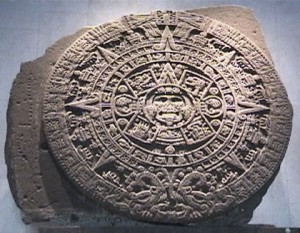
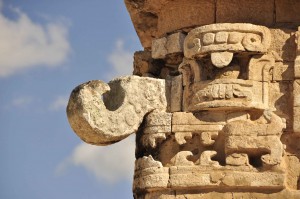
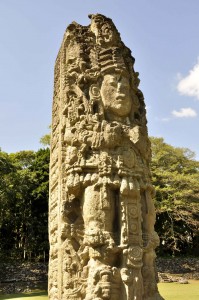

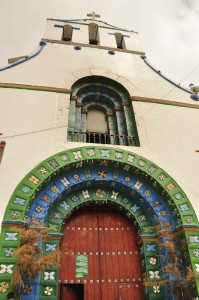
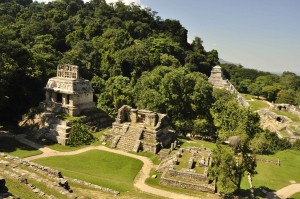
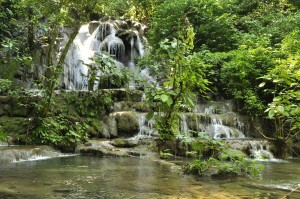

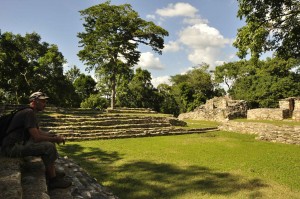
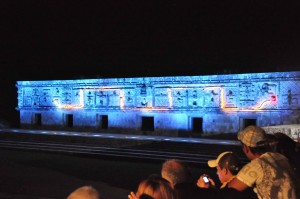
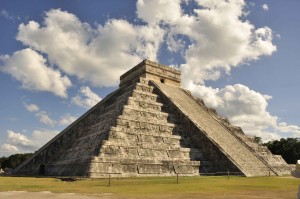
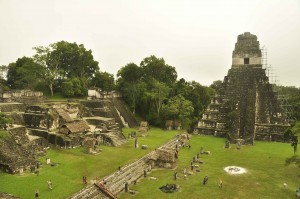
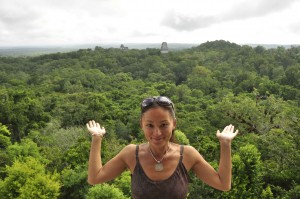
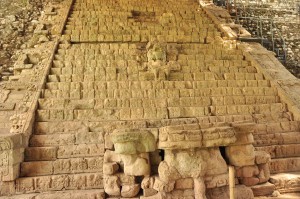
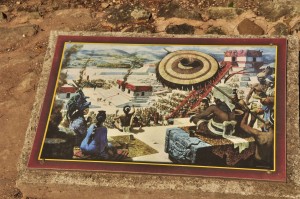
![India – The Sights It appears that detailed, timely blog postings on our adventures has proven to be a most elusive skill so far in our travels. So… in […]](http://meltingplots.com/wp-content/uploads/2009/12/DSC79471.jpg)


